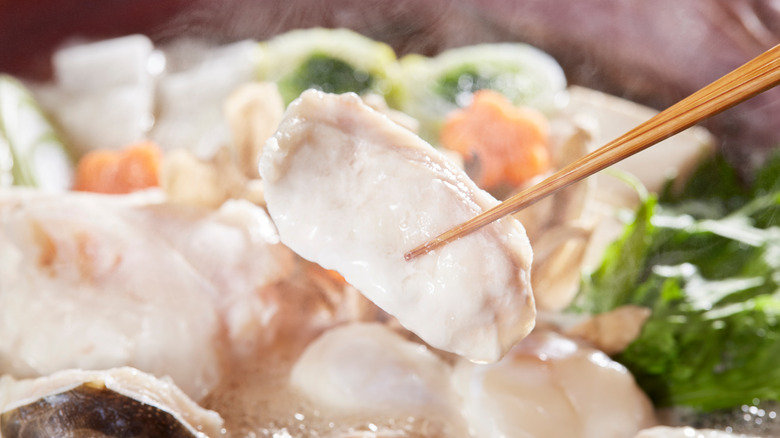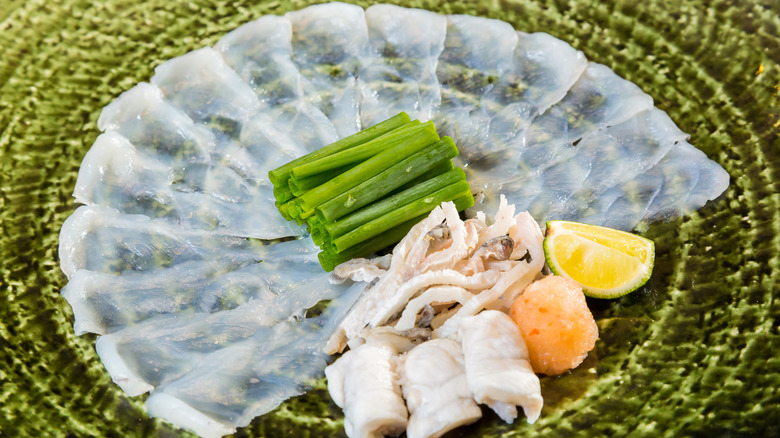Why You'll Have A Hard Time Finding Fugu In The U.S.
While fugu is a delicacy in Japan, if you live in the United States, you've probably only heard of it through movies and television. Fugu is pufferfish, a.k.a. blowfish. National Geographic explains that the inflatable nature of the 120 species of pufferfish is a survival mechanism. Pufferfish are slow and somewhat clumsy. So when they are threatened, they quickly gulp an enormous amount of water, swelling to many times their normal size. Pufferfish are also extremely poisonous. Per The New York Times, they contain a toxin called tetrodotoxin, or TTX, which is even more potent than arsenic, cyanide, and anthrax. Two or three milligrams of TTX is enough to kill a human.
That's where the media typically jump in, employing pufferfish as a plot device with life or death stakes. The Times recalls the James Bond novel, "From Russia With Love," wherein Bond nearly dies from a mysterious toxin revealed to be "fugu poison" in the following book, "Doctor No." A notable episode of "The Simpsons," entitled "One Fish, Two Fish, Blowfish, Blue Fish," centers on Homer Simpson eating fugu and then being told he has just 24 hours to live. In reality, the poison works even faster, with symptoms appearing 3-20 minutes after eating, per the U.S. Centers for Disease Control and Prevention (CDC). What begins as a tingling of the tongue turns into paralysis, and death occurs within 6-24 hours. All this considered, it's no surprise that fugu is hard to find in the States, but not impossible.
Chefs need a license to serve fugu
You're probably wondering why anyone would take the risk of eating fugu. First, not all parts of the fish are poisonous. The BBC notes that chefs in Japan are trained to remove all the internal organs that contain TTX. The Japanese government has tight restrictions on fugu, approving just 22 of the more than 120 pufferfish species for food (via The New York Times). Chefs must obtain a license to serve fugu, which requires them to undergo two years of training followed by a rigorous exam that a third of entrants fail. It's doubly hard to get fugu in the United States since it must be imported from Japan, requiring not one, but two governments to approve it (via Eater). The fish must first be prepared by a licensed chef in Japan and then approved by the U.S. Food and Drug Administration (FDA).
So, is eating fugu worth the risk? According to The New York Times, it isn't particularly flavorful. Many Westerners describe the fish as "bland." As noted by Insider, fugu is typically served plain in the form of thinly-sliced sashimi which is aged for 24 hours before serving. However, when The Times interviewed a Japanese local, he had a more nuanced opinion of fugu, describing it as "firm and elastic" with a delicate flavor with notes of umami. It also has an undeniable appeal to daredevils who like a little sense of danger with their dinner.

